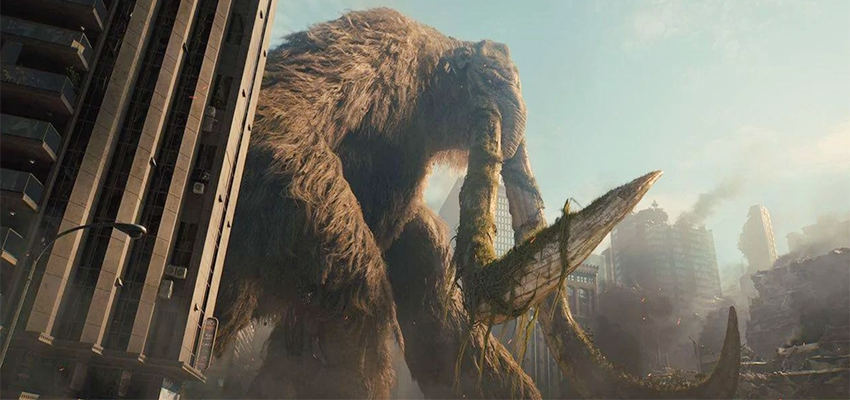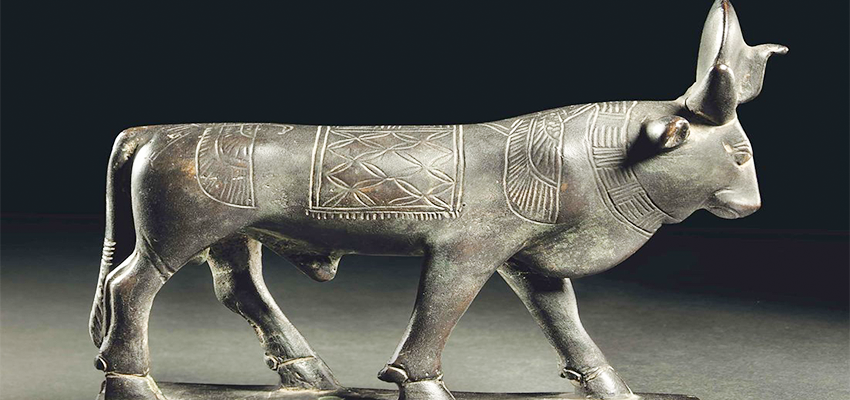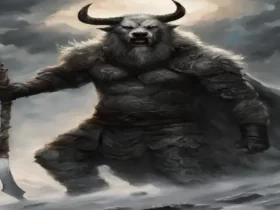Whether you’re a fan of horror movies or not, there’s no denying that the Behemoth monster is one of the most iconic and well-known movie monsters of all time.
According to fantasy stories and myths, Behemoth monsters are massive, hulking creatures that tower over everything else in their path. Their size and strength is absolutely staggering, and they’re not afraid to use it to pulverize anything in their way. If you’re looking for incredible fun facts about Behemoth giants, then keep reading on!
1 Explanation of The Behemoth Myth Is Still Not Clear

There are many theories about who the Behemoth is and what he was created to be. The most popular theory is that he was an analogy used to demonstrate the might of God, with some suggesting that it’s a creature that’s been extinct for centuries.
Some believe the former while others think that presenting him as a land monster ensured that the dignity associated with being a deity was stripped away from Behemoth entirely.
Many believe that Behemoth is a sort of mammal, though others believe they will find evidence to support the theory of him being an ancient prehistoric creature. In any case, Behemoth has become an important figure in early Christianity and can be recognized as such in cultures around the world
2 Behemoth Monster Can’t Be Conquered Easily By God

The Behemoth is a giant creature that humans cannot conquer. The Behemoth is said to be an unreal work, who cannot be conquered by God himself. The Behemoth has muscles that can be seen underneath the surface and its bones are as dense as bronze with its limbs harder than iron.
Behemoth, Leviathan, and Ziz have enthralled humans since we first became aware of them. They are known for their irrepressible power and unbeatable might. The creature has been said to be invincible except by God himself. Though there is still not much evidence to support any one theory, there are a few that might hold some truth.
3 Behemoth Is Often Depicted As An Ox Like Creature in Different Myths
Many believe this beast is a creature with strong resemblance to cattle. The word “Behemoth” itself is likely influencing this consensus. In Hebrew, the word for “behemah,” which means cattle in Hebrew, creates curiosity as to what sort of creature might this be. This high interest in determining the identity of the behemoth leads many to agree that it must be some kind of ox-like creature with immense power.
4 Behemoth Monster Can Drink Jordan River Alone
Additionally, the Behemoth is said to drink up a river without fear and is fearless when standing against the might of the Jordan River.
5 Behemoth In Jewish Literature

The legend of Behemoth, a powerful beast that battles against the other beast Leviathan – a sea dragon or sea serpent or sea monster. The creator corrupted Leviathan when he made it as powerful as Behemoth. However, this did not happen to Behemoth and it is often considered holy by Christians. During specific times – or in summer when his power is at its peak – this animal lets out a mighty roar that frightens animals that live in large herds and creates peace among them.
The Behemoth is a powerful, mythical beast that does not seem to be looking for a fight against human kind. Though this defies logic as the Leviathan is also an unconquerable primal creature that devours humans and boils its enemies alive by simply opening its mouth and This can possibly be explained through creation myths about the Behemoth.
6 Behemoth Is A Protector For Weaker Animals

The Haggadah, a Jewish text that describes the order of the Passover Seder, tells us that the Behemoth is strongest during the summer solstice. The roar of the Behemoth during summer solstice scares other animals and makes them less fierce.
Without the fear inspired by Behemoth’s roar, there would be nothing to protect weak animals and humans from becoming too violent or killing each other without reason. In this way, Behemoth is also a protector who helps keep weaker animals safe.
7 His Depiction Has Contradiction: Hippopotamus Or Ox

Some claim that Behemoth is actually a river horse, since the descriptions seem to match. Others say that Behemoth might have resembled an actual hippopotamus because of his large stomach and scope of endurance. However, there are several objections related to this; the first concerns Behemoth’s muscles that are shown in Behemoth’s belly.
The muscles throughout its body are more pronounced than any hippo would have, so it’s clear it’s not a hippo. Another issue is that in order to kill a hippopotamus, sacrificing or eating it was common during ancient Egyptian culture and festivals, whereas Behemoth cannot be killed for the same reason it is unconquerable.
8 Cryptozoologist Theories About behemoth Monster

Many scholars are left wondering what Behemoth could be if he’s not a hippopotamus. There are several ideas concerning Job’s description of Behemoth and dinosaurs that are brought up in attempts to solve this question.
Apatosaurus is often one of the possible creatures that comes into play when searching for his identity. Apatosaurus’ teeth are consistent with that of an herbivore, which helps to align the creature with Behemoth.
Other types of sauropods were also mentioned for their large size and herbivore diet. Because of their bone structure, it is also thought that rigid muscles would have been visible on the stomachs of these creatures. Admittedly, these animals would have inspired fear and awe into anyone who happened upon them but there is a major flaw with this theory in its otherwise very detailed descriptions of Job verse 40.
The creature is described with incredible detail yet there is no mention of the enormous neck – characteristic of sauropods. Additionally, their tail does not resemble a cedar tree but instead has similarities with an elephant’s tusks because it is a flexible rod-like structure rather than individual leaves like you would see along a cedar tree.
9 Hebrew Represents Behemoth As An Ox

People who reject the two above theories about the Behemoth often gravitate towards the belief that it is a super-ox that was much greater than any other creature. This may be due to the word ‘Behemoth’ itself; derived from Behemah – the Hebrew word , which is claimed to stand for cattle. Cattle are thought to be related to Behemah because of close associations; with many extinct species still being discovered in modern day times. A common claim is that this is why we have yet to find evidence of the Behemoth; it eventually became extinct and remains undiscovered by modern man.
10What Mud Fossil Theory Says For Behemoth Monster
Although many people have studied mud fossils in an attempt to understand the Earth’s history, others believe that some mud fossils have the potential to tell a much greater story. One theory suggests that most of the land masses on Earth are actually made from remains of monstrous creatures. On the other hand, these extreme mud fossil theories are often discredited as they coincide with stories passed down in Norse mythology wherein Odin, Vili, and Ve create Earth from the body of the giant Ymir.
Additionally, there are a wide range of claims about where exactly each creature was found- among them, a remains of Leviathan and Behemoth found in the sand of Sahara desert can be claimed as plausible.
11 Audhumla Is A Norse Myth Counterpart Of Behemoth

Audhumla might be related to an animal in Norse mythology similar to Behemoth. The myth goes that the unknown creature provided the created the first gods (Buri and Bestla) and provided the livelihood for the first of the frost giants. The creation myth tells us that this creature’s power lies in its loins. The ancient world often used the word “potency” to refer to fertility of certain creatures; and it is speculated that Audhumla may be associated with Behemoth.
12Story Of Moses That References To Behemoth
You might have heard stories of the Sacred Bull, which was worshiped in the ancient world. One story was that of Moses and his followers. When Moses went away up on Mount Sinai to pray, he advised his followers behind to wait by the side of the mountain and told them not to leave before he came back down. His many hours of prayer made his followers wander from God’s light and they instead start worshiping The Sacred Bull – a cattle like creature.
When Moses returned down from the mountain, he became angered by their disobedience and declared that this ‘god’ they were worshiping did not compare to the great might of God! He destroyed all their relics and punishment for abandoning God. Many scholars think The Sacred Bull has been replaced by Behemoth in order to motivate the killing of Behemoth alongside other peaceful beast like Leviathan.
13 The Bull of Heaven

The Epic of Gilgamesh also tells the story of a powerful bull. This bull is described as the one who offers to punish humans and destroy their crops because Inanna was upset due to Gilgamesh.
In order to get revenge, she asked an ancient god, Anu (the god of the sky), to let his bull release from its place in the sky. People believe that the Bull of Heaven could actually be Gugalanna, the first husband of Ereshkigal (goddess of the Underworld and sister to Inanna).
With full agreement, Anu who lent her power to Inanna, was able to send The Bull of Heaven upon the kingdom of Gilgamesh. Tilling his entire kingdom and consuming everything in sight – even drinking up mile long rivers. The myth resembles very closely with Behemoth stories.
Eventually, Gilgamesh slays the bull of heaven, but it remains visible in the sky as a constellation for years.
14 Similarities Between Egyptian God Apis & Behemoth

Apis is the bull-god in Egyptian mythology, who makes appearances in many different myths and is among the most important gods of their pantheon. Apis (or Behemoth) is a servant of Ptah – the god of creation, who may have been conceived as a manifestation of Ptah. The Egyptians considered Apis to be one of their most important gods and never sacrificed them out of fear or disrespect. Due to how important Apis is depicted as being in Egypt and his relation to Ptah, people view him with extreme reverence. Many people have arrived at the idea that Behemoth may be Apis as the stories share strikingly similar features.
15 Gavaevodata & Behemoth Similarity

There’s an Iranian myth that tells the tale of Gavaevodata – this cow being both male and female.
Gavaevodata is one of the ancient creations of this earth and is credited with creating all the benevolent animal life.
Some mythical stories credit Gavaevodata with being one of the six primordial material creations, as well as the creator of all benevolent animal life. This can perhaps be compared to Behemoth because Behemoth’s roar is community-safe and depicted much like Gavaevodata, who creates protective animal life around it.
16 Lord Shiva’s Steed Nandi & Behemoth Similarity

Hindu mythos mentions Nandi, the mythical guardian- steed of Shiva- who can be a quick reference to Behemoth. According to myth, when he was born, Nandi’s body was protected by a diamond-clad armor. Given that diamonds are known for their strength and hardness, it could be possible that this description is of the mythical creature Behemoth.
17 Behemoth Is An Elephant Like Creature In Christian And Occult Demonologies

There have been multiple classifications of demons throughout history. None of them are considered canon by mainstream Christian denominations, who instead rely on their own visions and beliefs. Behemoth is an elephant-like demon that is associated with gluttony, the sin of excess. In occult sources, the Behemoth often changes and becomes a giant, sinister elephant-like creature.
There is no convincing suggestion to what the Behemoth actually is. What’s more, some even suggested that it could be an elephant or a hippo based on what they think is seen in the animal in folklore and myth, as well as recognizing physical attributes to commonly found creatures like crocodiles, watusi buffalos, or elephants. Despite all of these possibilities, it would be in line with biblical meaning to believe that the Behemoth is just another mythical creature created by the author of Job.





